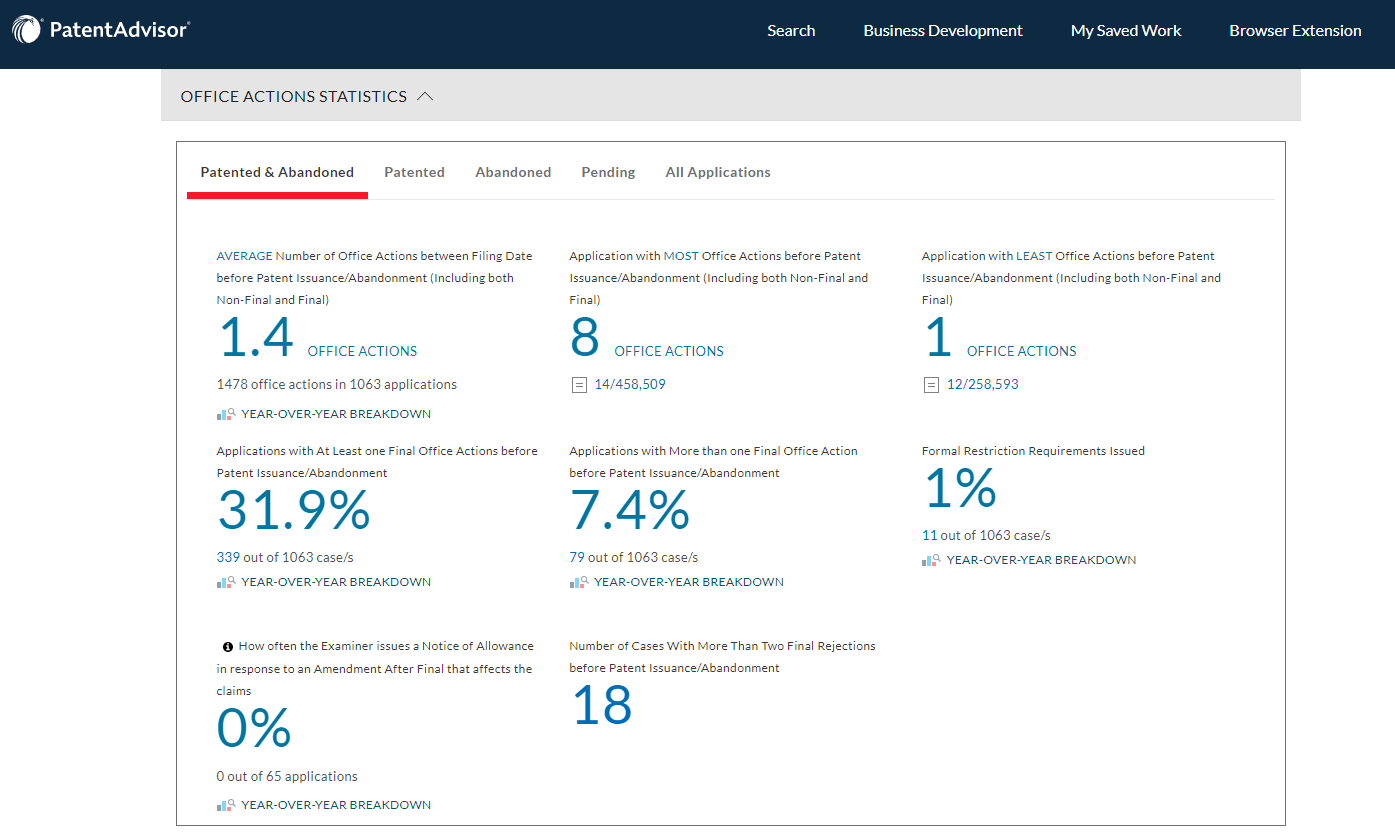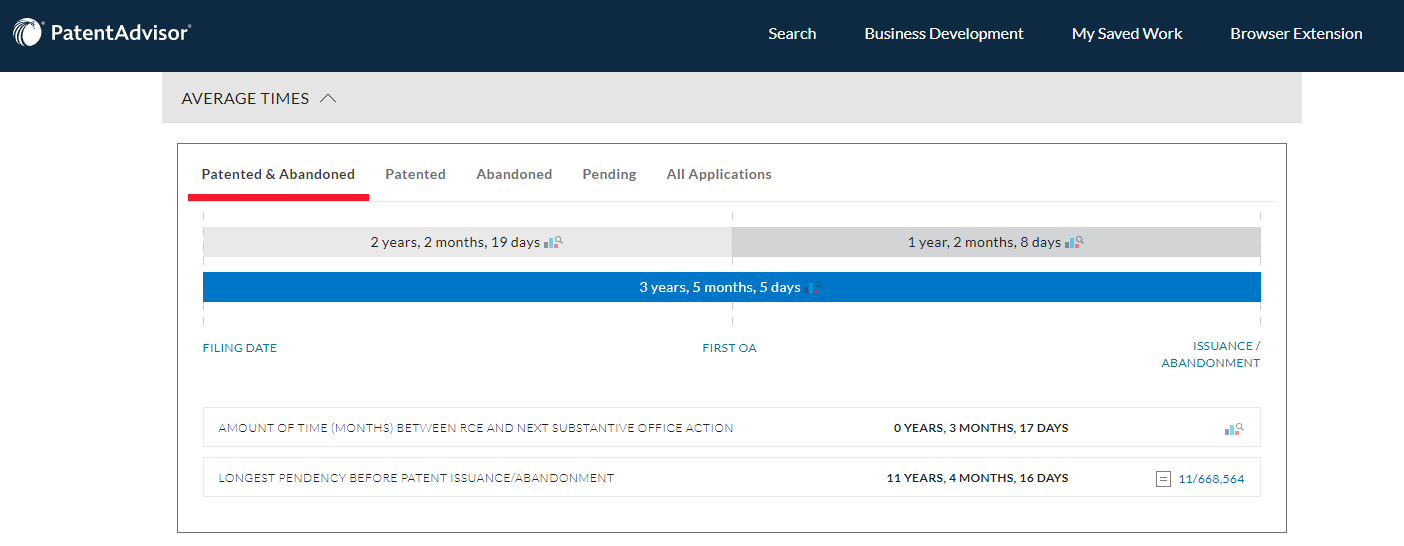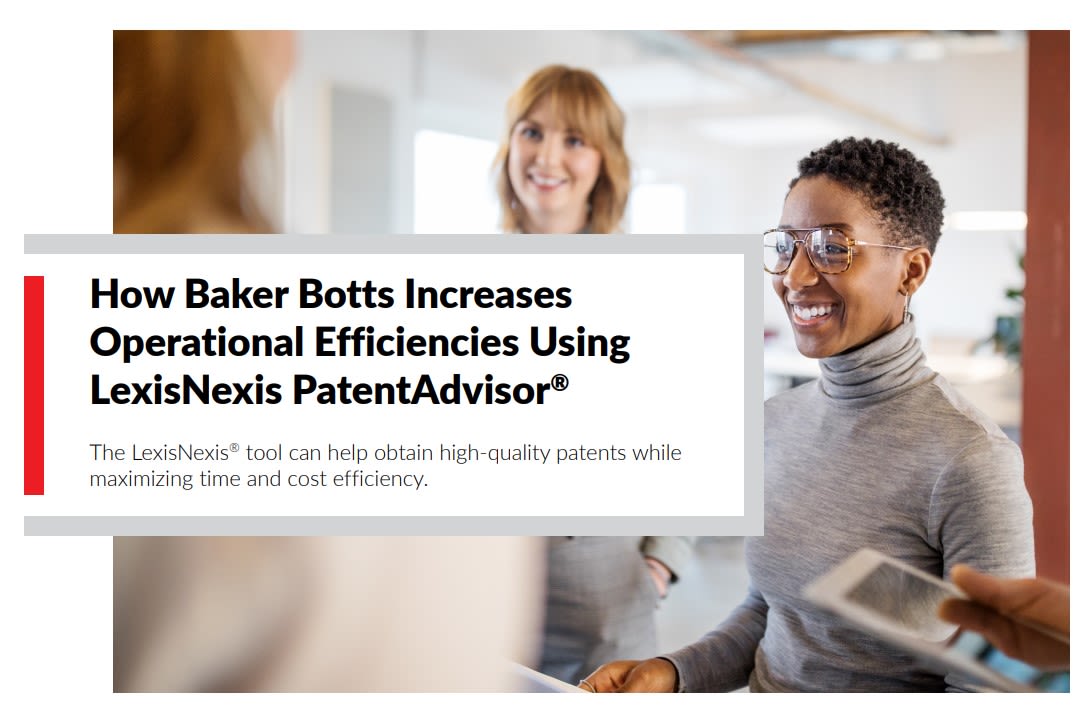How Baker Botts Increases Operational Efficiencies Using LexisNexis PatentAdvisor®
The LexisNexis® tool can help obtain high-quality patents while maximizing time and cost efficiency.

With about 650 lawyers, Texas-based Baker Botts has offices across the U.S. and globally, from Washington, D.C. and Palo Alto to London and Brussels. Established in 1840, its strengths are in energy, technology and life sciences, and it has more than 50 Fortune 100 companies among its clients. Baker Botts has a large intellectual property practice staffed by more than 180 attorneys and patent professionals who offer services that help their clients develop, build, maintain, protect and enforce their patents, trademarks, trade dress, advertising and marketing initiatives, and copyrights. Its lawyers collectively hold more than 240 scientific and technical degrees, including over 20 PhDs. In addition to building its strengths in human resources, the firm also invests in the technology and infrastructure needed to meet the increasingly complex needs of its clients.

Turning the tables
In developing patent prosecution strategies that have the best chance of succeeding with the U.S. Patent and Trademark Office (USPTO) examiners, patent attorney Dr. Michael A. Sartori, who is a partner with Baker Botts, has something of an advantage: He has been one.
Having gained a bachelor’s degree, a master’s degree and a PhD in electrical engineering and having obtained several patents for his own research, Sartori spent almost three years as an officer at the USPTO in Washington D.C., determining whether or not the inventions coming across his desk could be granted patent protection.
For Sartori, the experience gave him unique insights into the patent prosecution process and how best to place inventions before an examiner.
“As an examiner, you see many different styles and approaches from attorneys across the country trying to persuade the USPTO to give their client a patent. From that I learned successful ways of presenting patent applications and interacting with examiners.”
Now a partner with Baker Botts, Sartori gets to use his experience as an inventor and an examiner in his work as a practitioner handling patent applications for inventions across a wide variety of fields, from electrical and mechanical engineering to software, chemistry and materials science.
In the early days, his work often meant relying on gut feeling and personal experience as to the relative likelihood of examiners to grant a patent. “When you’ve been doing this for a while, you get a feel for what that line in the sand is between allowable subject matter and not allowable subject matter with the examiner,” he says.
However, while that experienced-based insight is extremely valuable, it requires many years of working in the field—in Sartori’s case, almost three decades. Today, he says, data is supplementing that experience and giving patent attorneys new insights on which to base their strategies.

Dr. Michael Sartori, Partner, Baker Botts L.L.P.
Dr. Michael Sartori, Partner, Baker Botts L.L.P.
Data as a game changer

As an attorney at an IP powerhouse, much of the work for Sartori and his colleagues is based around protecting innovations and enforcing rights across an enormous spectrum of industries, which keep the many attorneys and patent practitioners very busy. “At its core, innovation is based on change,” says Sartori. “We are agents of change.”
Change has also come to Baker Botts in another form of transformation: Digitization and the advent of patent prosecution strategies that are informed by data analytics. Using PatentAdvisor™ in addition to his years of experience, Sartori can now harness data and analytics, to make more-informed decisions on how to place inventions and applications before an examiner.
“What is fascinating about analytics and the PatentAdvisor data set is that it can augment the years of experience, and help you go beyond that gut feeling on what works,” he says. Sartori points to PatentAdvisor’s color-coding system: PatentAdvisor Examiner Time Allocation ( PatentAdvisor ETA™)—green, yellow and red—which ranks examiners according to examiner type and years of experience. The database, he says, also identifies whether or not an examiner is a primary examiner (an examiner who has successfully completed the USPTO’s Signatory Authority Program).
This kind of information is important, says Sartori. For example, a primary examiner is more likely than a non-primary examiner to have several years of experience, to understand the technology of an art unit and to have the confidence to allow a patent application with fewer Office Actions (written correspondence requiring a response from the applicant before prosecution can continue).

“Think about what a human can do that a machine can’t—those are the things you need to focus on, and, as these technologies become more ubiquitous, you need to adopt them or face becoming a dinosaur.”
Dr. Michael Sartori, Partner, Baker Botts L.L.P.


“The data is collected by the LexisNexis system and presented in a format that’s easily understandable,” he says. “Based on that data we can make informed decisions on advancing an application, hopefully to allowance.”
Bottom-line benefits

When it comes to helping clients prosecute large numbers of patent applications, the ability to understand what type of examiner is handling each case has implications for the efficiency and cost effectiveness of managing a patent portfolio, as well as for the ability to maximize the life of each individual patent granted.

This, explains Sartori, is because the term of a US patent is 20 years from the date of filing. All interactions with an examiner—such as Office Actions or requests for continued examination (RCE)— which take three-to-six months or, on occasion over a year—eat into the 20-year term of the patent. “If you can minimize the amount of time your patent application is pending at the USPTO, you can increase the term of the patent, thereby giving your client a longer patent right.”

Moreover each interaction with an examiner is costly, he says. Reducing the number of interactions therefore saves money as well. “You can put that money toward another application, or toward one with a more difficult timeline,” he says. “I feel like you can make smarter decisions using the data from PatentAdvisor, have a more efficient procurement portfolio process and strengthen the portfolio because your patents have longer terms.”
The result
Combining data from the examiner color-coding system with the relative importance clients assign to each patent application in their portfolios, Sartori can help them determine how much budget to allocate on trying to obtain a particular patent. “Based on that, and on our knowledge of the field, we can craft strategies that are directed towards success for our clients,” he says.
In Sartori’s view, this secures increased loyalty from existing clients and, using PatentAdvisor as a selling point, helps win new clients.
“It comes down to managing the budget—if you can reallocate your resources so as to drive toward your portfolio goals more effectively, that’s a win.”
PatentAdvisor - A powerful patent prosecution tool
“With PatentAdvisor, it feels like we are doing a better job of getting better patents faster which helps justify our decisions when we make recommendations to our clients because we can show them the data.”
For Sartori personally, PatentAdvisor analytics tools have also improved his day-to-day experience at work. “I like numbers,” he says. “So it’s made my job more enjoyable.”

Would you like to learn more about improving prosecution outcomes and managing client expectations with LexisNexis PatentAdvisor? Get in touch with us.


